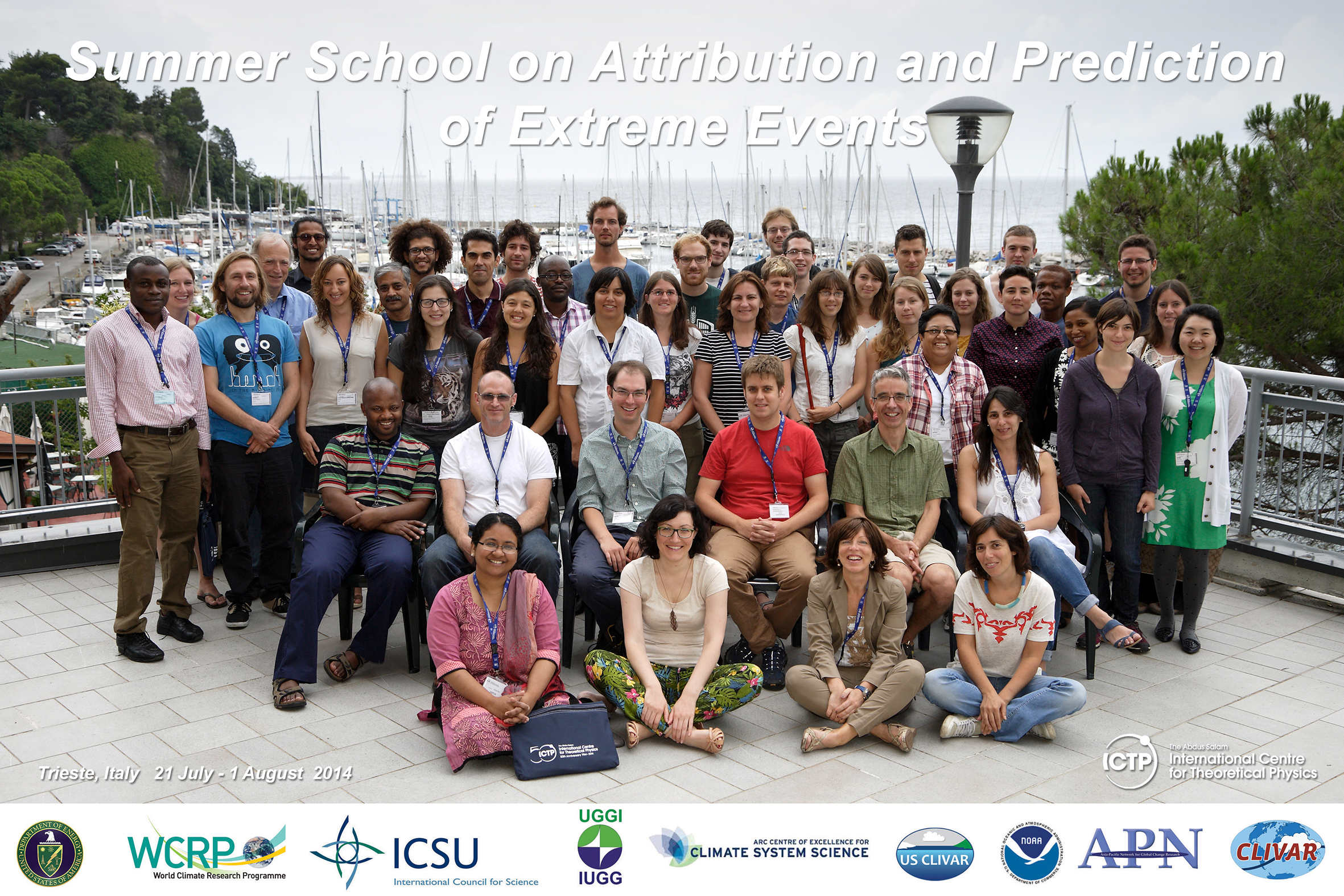5b. To what extent is it possible to reliably calculate any changed risk of unusually warm or cold or dry or wet seasons in regions of the world attributable to anthropogenic influence on climate? Assessment of climatepredict.net simulations
Faculty: F. Otto and D. Mitchel
Participants: S. Sippel, L. J. Harrington, M. T. Black, N. H. Mohd Salleh, A. J. Dittus
A shift in the distribution of variables such as daily maximum winter temperatures and daily precipitation extremes (Coelho et al. 2008), towards higher values has been attributed to anthropogenic climate change for various mid-latitudal regions in the past (e.g. Pall et al. 2011, Otto et al. 2012). However, while there are many process based arguments suggesting also a change in the shape of these distributions, attribution studiesdemonstrating this have not currently been undertaken. With the very large ensemble of simulations of the European winter (DJF) 2013/2014 the students in this project will have the opportunity to explore, in the first instance, how the estimated parameters of the Generalized Extreme Value (GEV) distribution vary under a climate change scenario (Kharin and Zwiers 2005). While it is expected that the location parameter will change (i.e. the GEV distribution shifts to a warmer state), it is unknown how the scale and shape parameters might vary, as well as higher order extreme diagnostics such as the extremal index. The students will look at these measures over a range of different climate fields. Secondly there are 11 ensembles of this past winter as it might have been in a world without anthropogenic climate change with each of these ensembles being forced with observed SSTs but with 11 different plausible patterns of warming removed. The students will investigate whether and how the distribution of the analysed variables have changed.
- Kharin, Viatcheslav V., and Francis W. Zwiers. "Estimating extremes in transient climate change simulations." Journal of Climate 18.8 (2005): 1156-1173.
- Coelho, C. A. S., et al. "Methods for exploring spatial and temporal variability of extreme events in climate data." Journal of Climate 21.10 (2008): 2072-2092.
- Otto, F. E. L., N. Massey, G. J. van Oldenborgh, R. G. Jones, and M. R. Allen (2012) Reconciling two approaches to attribution of the 2010 Russian heat wave. Geophys. Res. Lett., 39, L04702.
- Pall, P., T. Aina, D.A. Stone et al. (2011), Anthropogenic greenhouse gas contribution to flood risk in England and Wales in autumn 2000, Nature, 470, 382-385.


